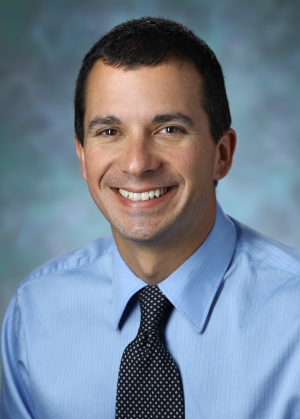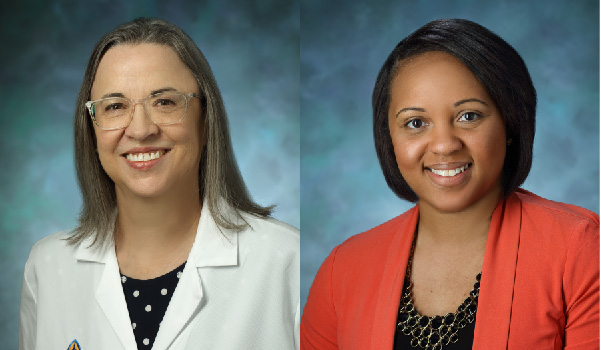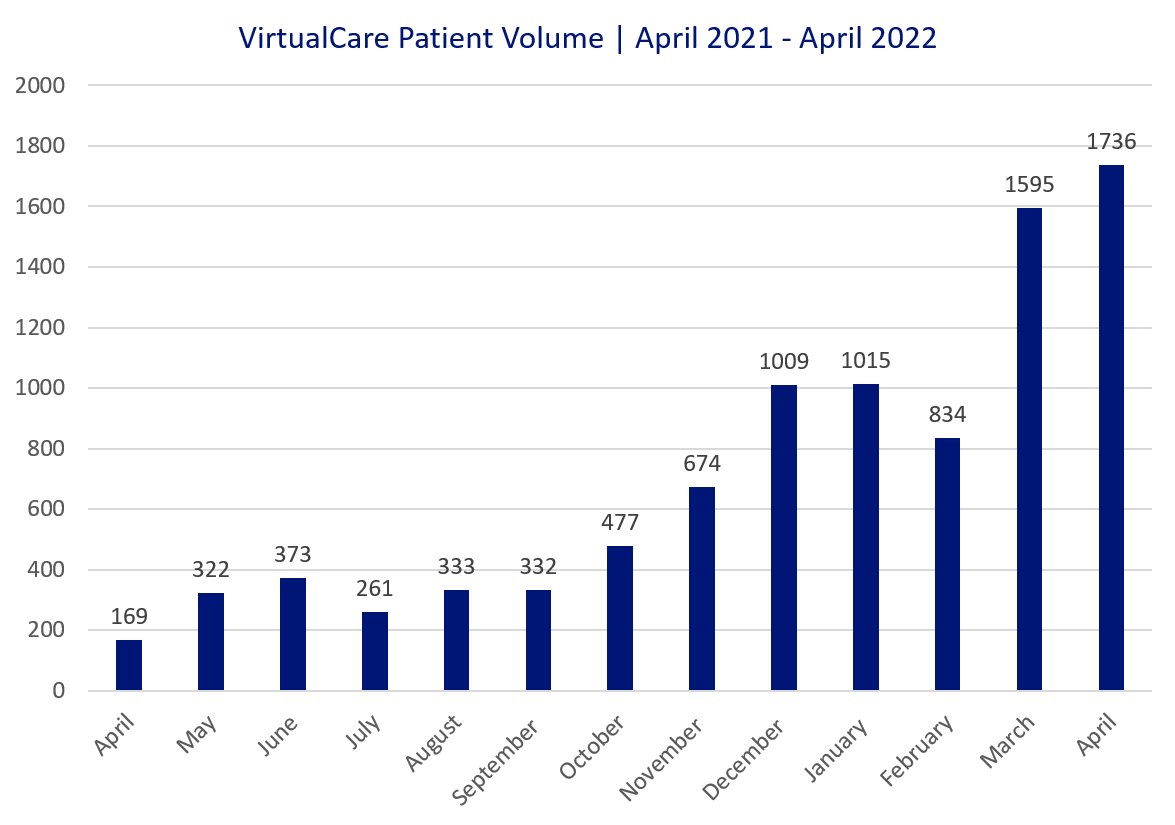FY22 Annual Report: VirtualCare
VirtualCare Improves Access and Convenience for JHCP Patients
One recent evening, a local retiree grew worried as his persistent cough got worse.
He contacted his Johns Hopkins Community Physicians (JHCP) office in Belcamp, Maryland, and received a return call from a nurse when the office opened at 8:00 the following morning. As the man described his symptoms, the nurse realized he needed to be seen that day. She also saw that finding time for him at the fully booked practice would be close to impossible.

So she asked him to consider a telemedicine appointment through Johns Hopkins Medicine VirtualCare.
A few hours later, the retiree was immersed in a video visit with a JHCP nurse practitioner. The clinician assessed her patient’s symptoms, ruled out COVID-19, accessed his electronic medical record to learn about his health history and co-morbidities, and prescribed medication.
“It was outstanding,” the man later wrote in a patient experience survey about the visit.
The VirtualCare program, launched in April 2021 with a single nurse practitioner, has grown to 10 JHCP practitioners, who deliver remote care that improves access for patients and frees clinicians for in-person cases.
It is staffed primarily by JHCP nurse practitioners and physician assistants, with JHCP physicians providing clinical and program oversight. By November 2022, the VirtualCare program had treated more than 17,000 patients.
“We’re seeing patients where and when they want to be seen,” says Michael Albert, M.D., JHCP chief of primary care clinical innovation and chief of internal medicine.
Patients can generally get appointments in 24 to 36 hours, and many practitioners are able to provide expanded hours due to the flexibility of working remotely.
Loretta Sutphin Stenzel, M.D., the program’s medical director, says patients appreciate the convenience, particularly when they can get appointments on evenings or weekends.
“You can do a lot of things you didn’t used to think you could do,” says Stenzel. “Patients can send in a photo of their skin rash, for example. Sometimes you can get things started, in terms of lab orders, or sometimes a patient just wants to be told it’s OK that their 3-year-old has a fever — they look pretty well otherwise.”

COVID-19 Was Catalyst
When the Johns Hopkins health system began treating patients with COVID-19 in March 2020, the health system greatly expanded its telemedicine capabilities in order to keep patients and providers safe. Soon after, JHCP President Steven Kravet suggested to Albert that they create a telemedicine program staffed by JHCP providers who would see patients across JHCP locations.
Patients who seek an appointment by telephone or through MyChart receive prompts when appropriate, asking if they’d prefer telemedicine. In general, low-acuity cases are considered best for VirtualCare, freeing clinicians to meet in person with their sickest and most complex patients.
“Looking at the VirtualCare schedule, a lot is cough, COVID, knee pain, neck pain,” says Amanda Thomas, the program’s practice administrator.
When Paxlovid was approved as a treatment for mild to moderate COVID-19, telemedicine proved the ideal way for clinicians to assess patients and determine if the medication would be appropriate.
The VirtualCare program is also beneficial to patients with behavioral and mental health issues, says Albert. “In the office, we can’t see their faces because they are wearing masks,” he says. “In their own homes, they’re comfortable and they’re unmasked.”
The program is expected to continue growing as more patients embrace the convenience of remote health care, Thomas says.
“This is a great success story,” says Albert. “It has allowed us to build a patient pleaser and grow our access.”

